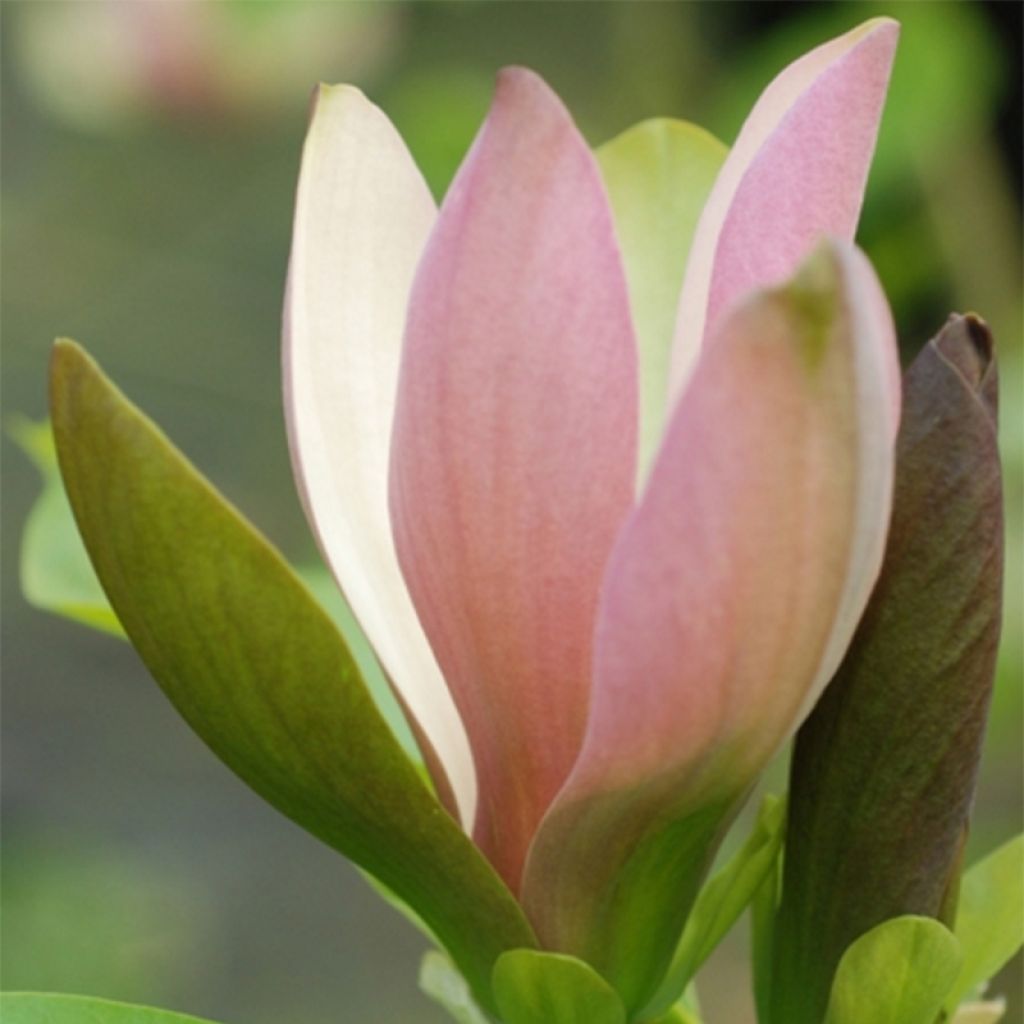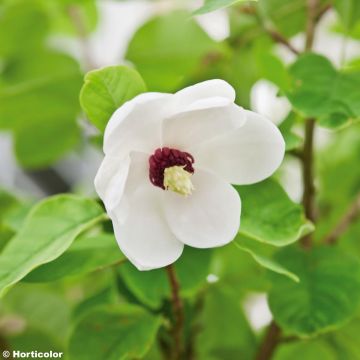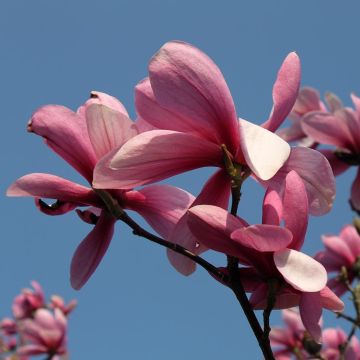

Magnolia brooklynensis Evamaria
Magnolia brooklynensis Evamaria
Magnolia brooklynensis Eva Maria
Magnolia
The shipped magnolia (in good condition) is slightly larger than expected. It seems to be thriving, but it's a bit early in the season to judge for sure.
Elesbed, 05/03/2024
Special offer!
Receive a €20 voucher for any order over €90 (excluding delivery costs, credit notes, and plastic-free options)!
1- Add your favorite plants to your cart.
2- Once you have reached €90, confirm your order (you can even choose the delivery date!).
3- As soon as your order is shipped, you will receive an email containing your voucher code, valid for 3 months (90 days).
Your voucher is unique and can only be used once, for any order with a minimum value of €20, excluding delivery costs.
Can be combined with other current offers, non-divisible and non-refundable.
Home or relay delivery (depending on size and destination)
Schedule delivery date,
and select date in basket
This plant carries a 24 months recovery warranty
More information
We guarantee the quality of our plants for a full growing cycle, and will replace at our expense any plant that fails to recover under normal climatic and planting conditions.
Would this plant suit my garden?
Set up your Plantfit profile →
Description
Magnolia x brooklynensis 'Evamaria' is a biennially bearing variety. Obtained in 1968, in the USA, at the Brooklyn Botanic Garden, it has many qualities that still delight enthusiasts and collectors of rare and original varieties. The flowering changes day by day and is absolutely charming. Large green buds tinged with yellow and purple open into upright tulip-shaped flowers, the magenta pink petals are washed with honey and then infused with soft orange and tender green. They appear in late spring, dotting a foliage with a silver underside. Like all magnolias, it will thrive in a moist, preferably neutral or acidic soil, in full sun or partial shade. Its modest size will suit small spaces well.
The 'Evamaria' Magnolia belongs to the Magnoliaceae family. It forms a branching bush with a rounded shape, reaching a height of 3m (9 to 10ft) and a width of 2m (6 to 7ft) after 10 years, with growth slowing down afterwards. Its deciduous foliage consists of large light green leaves, with a paler and finely hairy underside. From May to June, small solitary flowers bloom among the leaves, reaching a height of 6 to 10cm (3.9in). The buds preceding the flowering are protected by silky and colourful bracts, followed by tulip-shaped flowers with 6 waxy and thick tepals (indistinguishable sepals and petals), almost flat, with the inner face fading to salmon pink at full bloom. They gradually open into a gaping cup around a revealed heart, revealing numerous orange stamens.
An ornamental small tree par excellence, 'Evamaria' will work wonders in both a small-sized garden and a large park. It is most often used as a solitary subject in the middle of a short grass meadow or in front of a house, where its remarkable flowering is always perceived as a miraculous event. It can also be advantageously associated with an interesting field of plants at other times of the year, such as a Japanese maple, a Hibiscus syriacus, a Prunus x subhirtella 'Autumnalis', or even a Cornus kousa 'Satomi'. It also pairs well with acid-loving plants (Rhododendrons, Camellias, Nandinias, Peonies...). It is also possible to create beautiful flowering hedges along pathways, alternating this Magnolia with other cultivars, for example. Its root system is not dangerous for foundations, so it can be installed against the wall of a house.
Report an error about the product description
Magnolia brooklynensis Evamaria in pictures




Plant habit
Flowering
Foliage
Botanical data
Magnolia
brooklynensis
Eva Maria
Magnoliaceae
Magnolia
Cultivar or hybrid
Other Magnolia
View all →Planting and care
Magnolia 'Evamaria' prefers sheltered positions, sunny to semi-shaded exposures, a fresh, well-drained, rich, neutral or acidic soil. It does not like overly dry soils, windy locations, or root competition, as its root system is shallow. It is hardy (down to -25°C), but it is advisable to protect young plants from frost for two or three years after planting. Note that late frosts and cold winds can damage flower buds and young leaves, affecting flowering. Magnolia can be planted in spring or autumn, outside the frost period. Prepare a hole 80cm (31.5in) wide and deep, with a good supply of heath soil and compost. Be careful when installing it in the hole, as the roots are fleshy but quite fragile. Immediate watering with non-lime water (rainwater) helps to compact the soil around the roots. During the first year of planting, Magnolia requires watering once a week. It will appreciate an annual amendment in spring. It is recommended to mulch around its base to keep it cool during the hot season, enrich the soil, and protect it from the cold in winter. As its roots are fragile, it is best not to transplant it. The only enemies of Magnolia are parasites such as scale insects, snails, and slugs that attack young plants, and cryptogamic diseases (in overly moist soil). Coral disease can attack poorly pruned branches (careful pruning with well-maintained tools is necessary). It is worth noting that magnolias are ornamental trees that tolerate atmospheric pollution well and that their roots do not pose a threat to building foundations.
Planting period
Intended location
Care
-
, onOrder confirmed
Reply from on Promesse de fleurs
Similar products
Haven't found what you were looking for?
Hardiness is the lowest winter temperature a plant can endure without suffering serious damage or even dying. However, hardiness is affected by location (a sheltered area, such as a patio), protection (winter cover) and soil type (hardiness is improved by well-drained soil).

Photo Sharing Terms & Conditions
In order to encourage gardeners to interact and share their experiences, Promesse de fleurs offers various media enabling content to be uploaded onto its Site - in particular via the ‘Photo sharing’ module.
The User agrees to refrain from:
- Posting any content that is illegal, prejudicial, insulting, racist, inciteful to hatred, revisionist, contrary to public decency, that infringes on privacy or on the privacy rights of third parties, in particular the publicity rights of persons and goods, intellectual property rights, or the right to privacy.
- Submitting content on behalf of a third party;
- Impersonate the identity of a third party and/or publish any personal information about a third party;
In general, the User undertakes to refrain from any unethical behaviour.
All Content (in particular text, comments, files, images, photos, videos, creative works, etc.), which may be subject to property or intellectual property rights, image or other private rights, shall remain the property of the User, subject to the limited rights granted by the terms of the licence granted by Promesse de fleurs as stated below. Users are at liberty to publish or not to publish such Content on the Site, notably via the ‘Photo Sharing’ facility, and accept that this Content shall be made public and freely accessible, notably on the Internet.
Users further acknowledge, undertake to have ,and guarantee that they hold all necessary rights and permissions to publish such material on the Site, in particular with regard to the legislation in force pertaining to any privacy, property, intellectual property, image, or contractual rights, or rights of any other nature. By publishing such Content on the Site, Users acknowledge accepting full liability as publishers of the Content within the meaning of the law, and grant Promesse de fleurs, free of charge, an inclusive, worldwide licence for the said Content for the entire duration of its publication, including all reproduction, representation, up/downloading, displaying, performing, transmission, and storage rights.
Users also grant permission for their name to be linked to the Content and accept that this link may not always be made available.
By engaging in posting material, Users consent to their Content becoming automatically accessible on the Internet, in particular on other sites and/or blogs and/or web pages of the Promesse de fleurs site, including in particular social pages and the Promesse de fleurs catalogue.
Users may secure the removal of entrusted content free of charge by issuing a simple request via our contact form.
The flowering period indicated on our website applies to countries and regions located in USDA zone 8 (France, the United Kingdom, Ireland, the Netherlands, etc.)
It will vary according to where you live:
- In zones 9 to 10 (Italy, Spain, Greece, etc.), flowering will occur about 2 to 4 weeks earlier.
- In zones 6 to 7 (Germany, Poland, Slovenia, and lower mountainous regions), flowering will be delayed by 2 to 3 weeks.
- In zone 5 (Central Europe, Scandinavia), blooming will be delayed by 3 to 5 weeks.
In temperate climates, pruning of spring-flowering shrubs (forsythia, spireas, etc.) should be done just after flowering.
Pruning of summer-flowering shrubs (Indian Lilac, Perovskia, etc.) can be done in winter or spring.
In cold regions as well as with frost-sensitive plants, avoid pruning too early when severe frosts may still occur.
The planting period indicated on our website applies to countries and regions located in USDA zone 8 (France, United Kingdom, Ireland, Netherlands).
It will vary according to where you live:
- In Mediterranean zones (Marseille, Madrid, Milan, etc.), autumn and winter are the best planting periods.
- In continental zones (Strasbourg, Munich, Vienna, etc.), delay planting by 2 to 3 weeks in spring and bring it forward by 2 to 4 weeks in autumn.
- In mountainous regions (the Alps, Pyrenees, Carpathians, etc.), it is best to plant in late spring (May-June) or late summer (August-September).
The harvesting period indicated on our website applies to countries and regions in USDA zone 8 (France, England, Ireland, the Netherlands).
In colder areas (Scandinavia, Poland, Austria...) fruit and vegetable harvests are likely to be delayed by 3-4 weeks.
In warmer areas (Italy, Spain, Greece, etc.), harvesting will probably take place earlier, depending on weather conditions.
The sowing periods indicated on our website apply to countries and regions within USDA Zone 8 (France, UK, Ireland, Netherlands).
In colder areas (Scandinavia, Poland, Austria...), delay any outdoor sowing by 3-4 weeks, or sow under glass.
In warmer climes (Italy, Spain, Greece, etc.), bring outdoor sowing forward by a few weeks.


















































